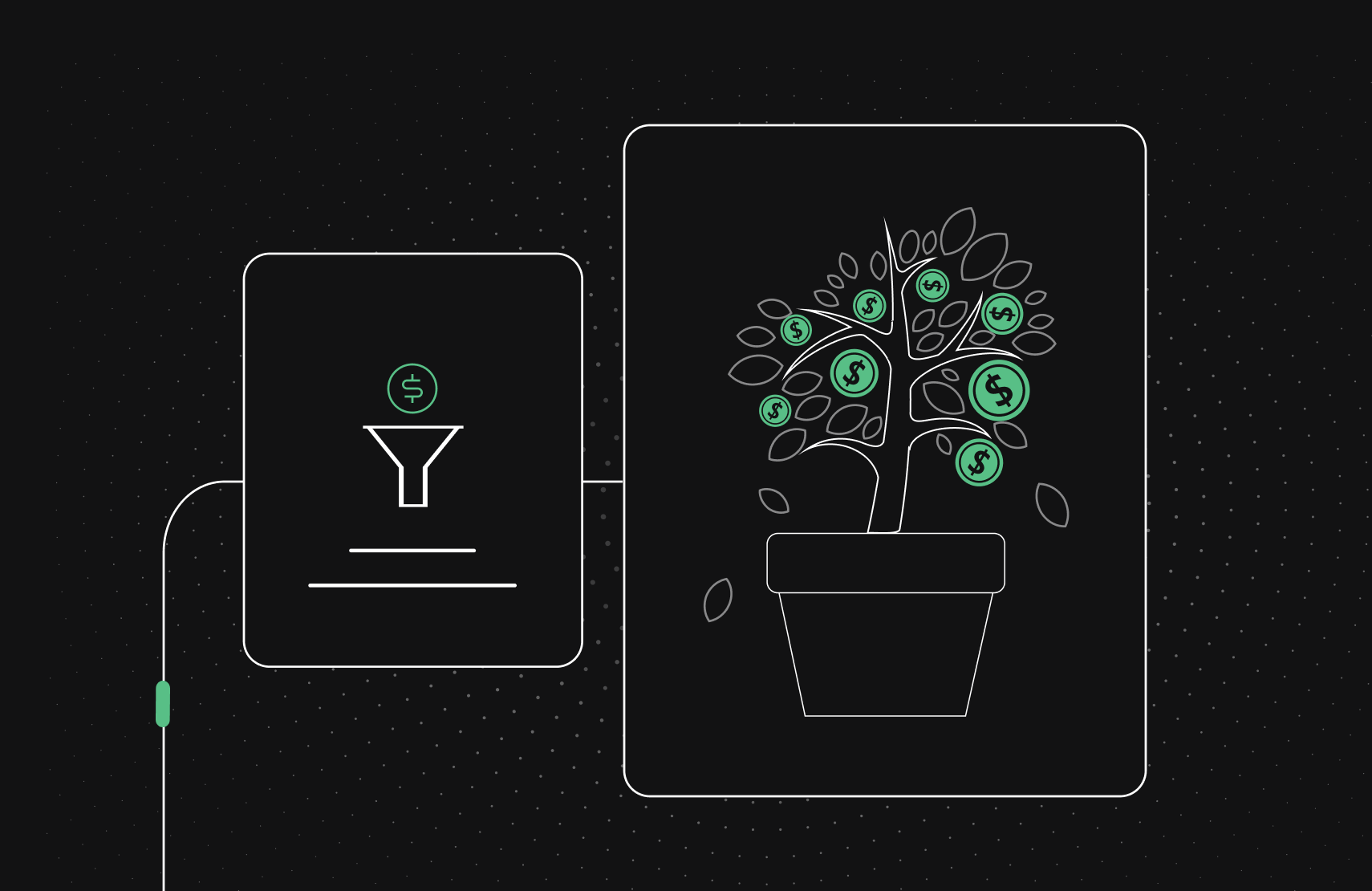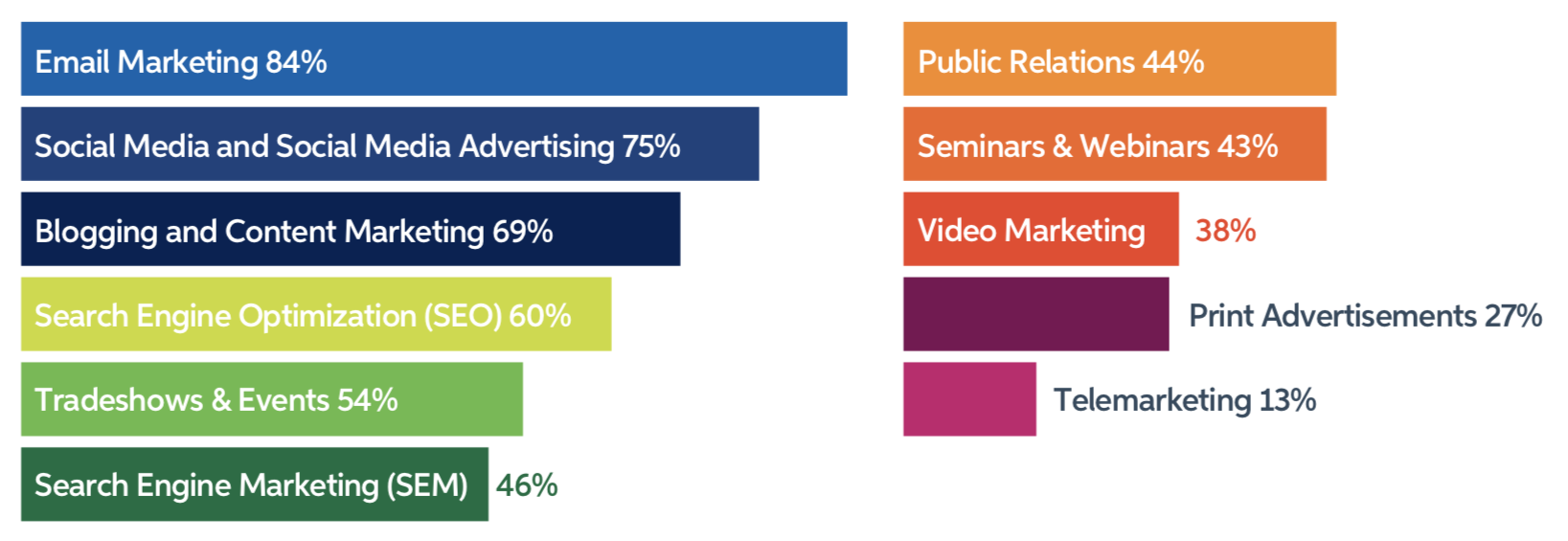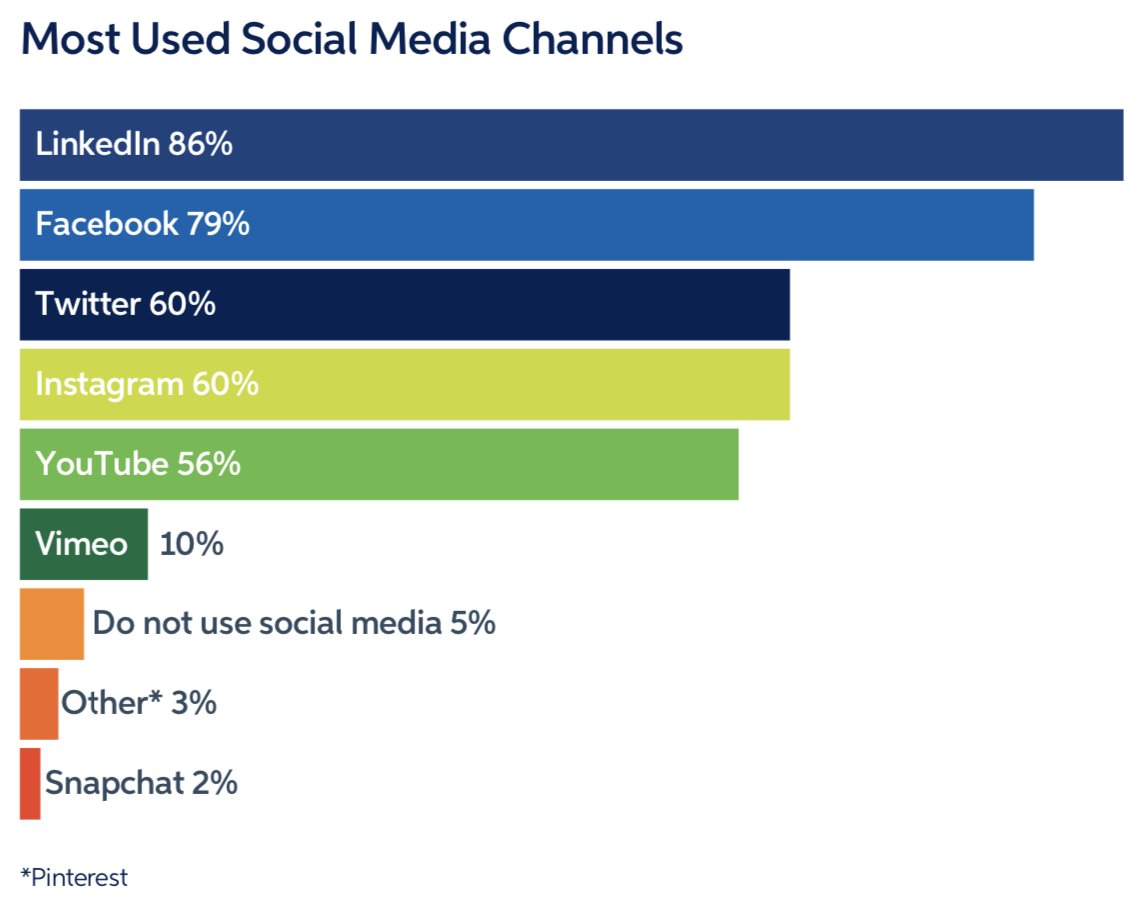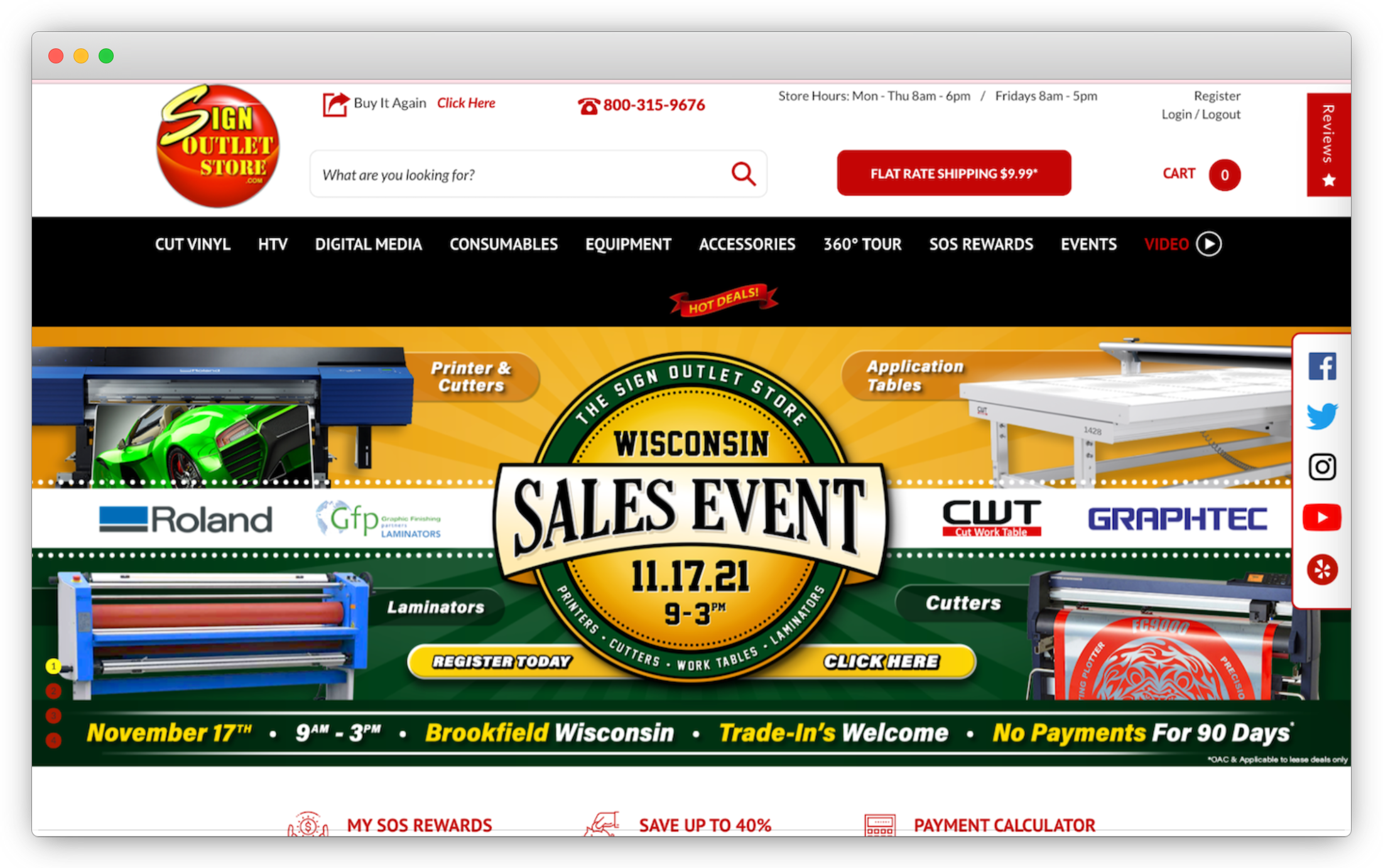Optimizing B2B Sales Funnels with Digital Marketing: Part 6 of 8

Offline media have traditionally driven the marketing function at most B2B companies, but today, B2B marketing has gone digital in a big way.
The most implemented marketing tactics and top areas of marketing spend are digital initiatives, with social media now a significant channel for B2B marketers.
B2B marketers can leverage the digital channels traditionally used by B2C marketers to reach new markets, drive engagement, generate leads, and convert buyers.
Digital marketing has altered the traditional B2B sales funnel. As a result, marketers can leverage their heritage of one-to-one relationships and concentrated customer bases to make digital marketing even more effective than it has historically been in B2C marketing.
I am partnering with fabric this Fall season to revisit concepts in my book Billion Dollar B2B E-Commerce and reflect on how organizations approached these concepts during the height of COVID-19 that pushed more business online. This is part six of an eight-part series.
As digital has changed how consumers shop over the last 20+ years, the methods and channels for reaching buyers have evolved. While these digital marketing channels have been well-established in consumer e-commerce for many years, these are generally new approaches for most B2B sellers. As a result, digital marketing can be challenging and confusing for B2B companies dipping their toes into digital for the first time.
The marketing function at most B2B companies has traditionally been driven by offline media, such as content (e.g., leadership publications), trade shows, print advertising in industry publications, sponsorships at industry events, and other methods. But the world has evolved.
[toc-embed headline=”B2B Marketing Has Gone Digital”]
B2B Marketing Has Gone Digital
COVID-19’s impact on B2B marketing has been profound. In the earliest days of the pandemic, many companies were compelled to make an immediate transition to digital marketing just to survive. This forced them to master digital marketing channels or hire people with experience in digital marketing.
Today, it’s clear that omnichannel B2B sales are here to stay. Firms that are serious about success must develop the marketing function to include significant digital components to remain relevant to the modern B2B buyer. This is evident when we look at how companies have shifted their marketing budgets toward digital channels. Marketers are now putting more money into improving their website, digital marketing, and social media than ever before.
B2B marketing agency Sagefrog Marketing Group recently released their 2021 B2B Marketing Mix Report, which utilized data from their annual survey of B2B professionals across a wide range of industries. It found that 5 of the top 6 most implemented marketing tactics were digital, including email marketing, social media, content marketing, search engine optimization (SEO), and search engine marketing (SEM).

The report also found that investments in marketing have increased compared with previous years. Today, the top areas of marketing spend include website development, digital marketing, content marketing, branding, and social media.

Meanwhile, social media remains a popular tool for marketers. LinkedIn continues to be the most used and engaging social media channel for B2B marketing professionals. The platform has introduced many new advertising options in the past few years, specifically designed to drive engagement, open rates, and lead generation.
A couple of very effective engagement tactics today are LinkedIn Sponsored Content and LinkedIn InMail. The other most used social media channels are Facebook, Twitter, Instagram, and YouTube. Instagram use increased nearly 30% compared to last year, while YouTube use increased by 20%.

As you can see, B2B digital marketing isn’t on its way to disrupting traditional marketing efforts. It’s already here. The COVID-19 pandemic has only accelerated the shift for companies and industries that were historically slow to modernize. Today, digital initiatives dominate the marketing tactics and expenditures of B2B companies, with social media now an important channel for B2B marketers.
What B2B Marketers Can Learn from B2C Retail Strategy
B2B marketers now leverage many of the tried and true methods their B2C counterparts use to generate and convert leads and reach new markets. B2B marketers can learn from their B2C colleagues in this area and expand and customize the tactics described above to their own industries. For example, traditional online marketing tools like paid search, social media, display advertising, email, and more have long been a part of the playbook for consumer-facing companies.
In many ways, digital marketing is a perfect vehicle for B2B marketing, where one-to-one relationships have long been the foundation of business success. Digital marketing has the promise to be even more effective for B2B channels than it has traditionally been in the B2C realm.
For example, audience segmentation is typically very different in B2C, where it is usually based on demographics, geography, lifestyle preferences, and other high-level demographic and psychographic factors. By contrast, B2B audiences are typically smaller, and detailed information is known about each B2B customer. Marketing can be segmented and targeted in ways that are truly one-to-one and reflect the B2B marketer’s traditional relationship approach.
With this in mind, companies must take the time to modernize their traditional sales funnels to seize new opportunities that are available right now.
Re-examine the Sales Funnel
A sales funnel is a marketing concept that maps out a customer’s journey when making a purchase. If you’re a B2B marketer, it is time to re-examine your funnel, paying close attention to how digital tactics can and should contribute at each stage. At each step of the funnel, digital marketing plays a role in informing the buyer’s journey. Consider the graphic below, which shows a traditional sales funnel and how various digital marketing tactics map to each stage of the funnel.

A good portion of the marketing collateral used in traditional marketing can be repurposed for digital channels. However, there are also unique skills and approaches necessary for success in digital marketing and cross-channel selling. Your marketing message must be adapted to digital media and formulated to reinforce both online and offline selling.
There are more opportunities than ever to leverage digital marketing, and many B2B companies are still early in deploying digital advertising. As a result, the return on marketing spend in digital can be very high because it is not yet as competitive as it is in B2C. Additionally, digital marketing is measurable in ways that most traditional marketing approaches are not.
Active and accurate measurement of your marketing efforts against a set of defined key performance indicators (KPIs) is critical for success. This needs to be examined in both the short and long term.
Short-term measurement helps correct any major issues with your marketing program and capture opportunities as they arise. Long-term measurement helps identify trends and evaluate your overarching strategy to determine what larger, strategic initiatives are needed to boost your business, grow revenue, and deepen market share.
[toc-embed headline=”B2B Digital Marketing: Putting It Together”]
B2B Digital Marketing: Putting It Together
An example of a company that has embraced B2B digital marketing is Sign Outlet Store. The company has been in business since 1991 and is a national wholesaler of sign-making supplies & materials, with offices in Lisle, Illinois and Brookfield, Wisconsin.
As part of its digital marketing efforts, the company revamped its e-commerce website to improve the user experience (UX), develop a reward points system for online users, and develop a reorder button for quicker and easier shopping.

In addition to implementing an automated workflow and conversion tracking, the company also began using traditional B2C marketing strategies, including organic SEO, online marketing, email marketing, and social media marketing. As a result of these various digital marketing projects, Sign Outlet Store’s sales increased from just $10,000 per year to $100,000 per month.

B2B e-commerce expert and author of Billion Dollar B2B E-Commerce.